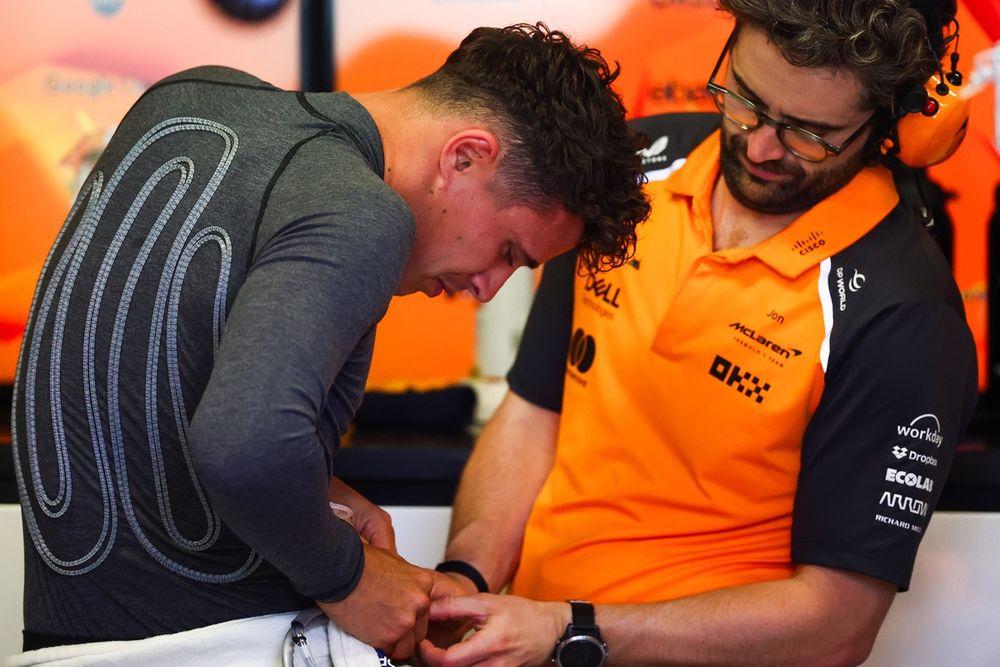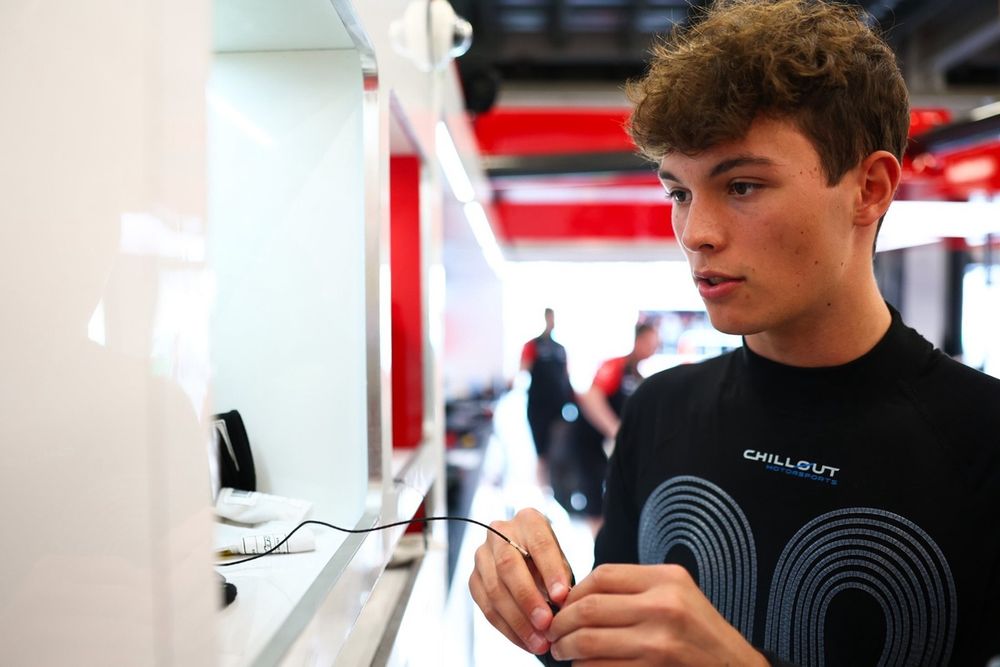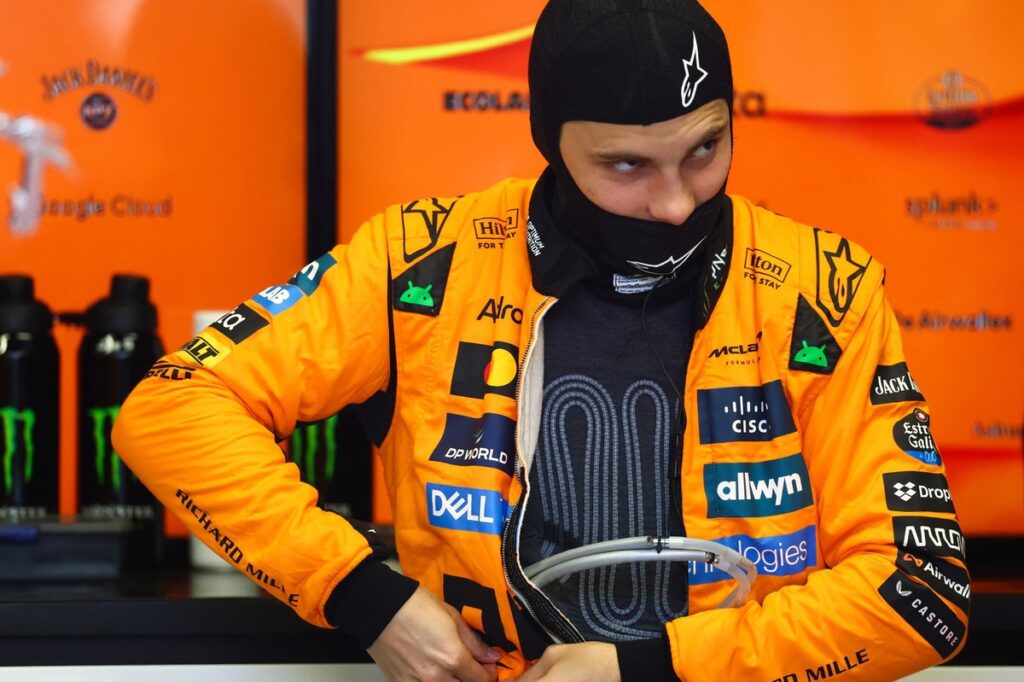For the first time ever the FIA has issued teams with a ‘Heat Hazard’ warning ahead of this weekend’s Singapore Grand Prix, since temperatures are forecast to hit 31C on Saturday and Sunday.
This means all cars must carry the additional components required to operate cooling vests. For the moment, it’s up to the drivers whether they wear them or not – but if they choose not to, they will have to carry additional ballast.
This somewhat peculiar arrangement is a result of various trade-offs and compromises which have had to be made since the FIA decided something had to be done about races held in extremes of heat and humidity. The starting point was the 2023 Qatar Grand Prix where, among others, Logan Sargeant was withdrawn from the race with heat exhaustion and Esteban Ocon vomited repeatedly into his crash helmet during the final laps.
Most teams have tested their systems in practice, some in race environments, but the introduction of the technology has been dogged by technical and practical difficulties. That’s why the cooling vests remain optional for now, but will become mandatory in 2026.
As usual with safety and wellbeing technologies – the HANS device and seat belts were made compulsory decades apart, and yet were greeted with almost identical chafing and teeth-gnashing – many drivers instinctively reacted to the cooling vests as a threat to their masculinity. Those who actually tried them in hot environments found obvious benefits, word has got around, and a gentle pivot in mentality is under way.
George Russell was first to race with a cooling vest, in Bahrain this season. Not only did he note the comfort benefits over the course of the race, he was better equipped to manage the extra control inputs required to drive around the severe electrical issue which plagued his car in the latter stages. The result was an impressive – and unexpected – podium finish.
George Russell, Mercedes
Photo by: Andrej Isakovic – AFP – Getty Images
In Saudi Arabia several other drivers evaluated the cooling vests in practice, including Russell again, team-mate Andrea Kimi Antonelli, Oscar Piastri, Oliver Bearman, Alex Albon, Carlos Sainz, Pierre Gasly and Yuki Tsunoda. Albon also raced with one while others decided that, since the race hadn’t officially reached the 31C ‘Heat Hazard’ threshold, the additional weight of the system would dent their performance.
“It’s declared for it [heat hazard] already, right, so we all have to fit the ballast anyway,” Nico Hulkenberg said in Singapore. “You’ve got to fit the ballast. But then you might as well take the thing.
“We haven’t actually had it properly running yet, so we still need to verify and try it out and sign it off. I will, yeah.
“After Jeddah, I was toast after the race. It was bloody hot. And I had Alex [Albon] next to me on the plane, and he ran the thing, and he was fresh like a spring chicken. So I said, next time I’m going to run that thing.”
Declaring a heat hazard makes the decision about whether or not to wear the cooling vests less clear cut, because all the cars will now have to carry the architecture required to run the cooling vests or 5kg of ballast if a driver opts not to wear the vest.
The drivers also flagged up practical problems with the cooling vests at the beginning of the season. The nature of the system – around 50m of fine-gauge tubing carrying coolant around a bespoke-fitted vest around the driver’s torso – added bulk which compromised fit in the already cramped cockpit.
The entry point for the tubes also posed challenges: the connecting cluster is by nature quite lumpy but it has to go somewhere, and the original location above the hip was deemed sub-optimal. Ocon likened it to a tennis ball.
Now the connector is at the front, but it can still get in the way of the seat belts.

Lando Norris, McLaren
Photo by: Clive Rose / Formula 1 via Getty Images
There have been other practical obstacles, and not just Lewis Hamilton’s observation that the vest “itches a lot”.
By their nature, flexible tubes can become crimped in the tight enclosure of an F1 seat, impeding flow. Also, the inside of an F1 car is one of the most hostile environments on earth, where temperatures can reach over 40C. Reliable running of the cooling architecture is not always a given.
If the heat exchanger fails or cannot keep up with demand, as has happened occasionally in sportscar racing, then it can end up pumping hot rather than cooled liquid around the driver’s skin instead. Some F1 teams who tested the system found it broke down before the end of a race distance.
Despite these fears, a consensus is emerging among the drivers that it is worth trying this weekend in Singapore, even though this is a race where heat and humidity is a given and most drivers undertake specific training for it.
“Singapore, it’s one of those races where you can prepare for it in every way possible,” said Lance Stroll, who passed out during the 2023 Qatar Grand Prix.
“Heat training, sitting in saunas – I sat in a sauna all week. But from my experience, no matter what you do, it’s always a brutal race physically, mentally. With the challenges of the track, the walls, no room for error.
“And just the cockpit, the heat in the car, insanely high temperatures. So yeah, I’m going to try the vest, see if it works. But I think no matter what, maybe it only works for five laps and then you have no more cooling. Then it’s just 50 laps of suffering.”

Oliver Bearman, Haas F1 Team
Photo by: Peter Fox / Getty Images
“I think only hot is not too bad for us,” said Sainz. “We have that, for example, in Hungary, where it gets really hot but it’s not humid. Humidity on its own is not too bad at all if it’s not too hot – but when it’s 28, 30 degrees plus humid, that’s when it gets to Singapore levels and it’s tough.
“Teams are managing to make it [the cooling system] work better and better every time we run it. At the beginning we had it to work more or less for half an hour. I think hopefully now the whole system can work at least for an hour.
“It’s a two-hour race. Again, I’ve done Singapore 10 times. If it breaks or it doesn’t work, I’m not worried. I’ll do the race and I’ll jump out fresh like I always do. But if it works, it’s better because then you suffer a bit less.”
For next year, the new generation of cars will be required to incorporate the hardware necessary to run cooling vests and it’s understood that further work is going on behind the scenes to make it more resistant to the hostile running conditions of F1 machinery.
We want to hear from you!
Let us know what you would like to see from us in the future.
Take our survey
– The Autosport.com Team
Read the full article here

